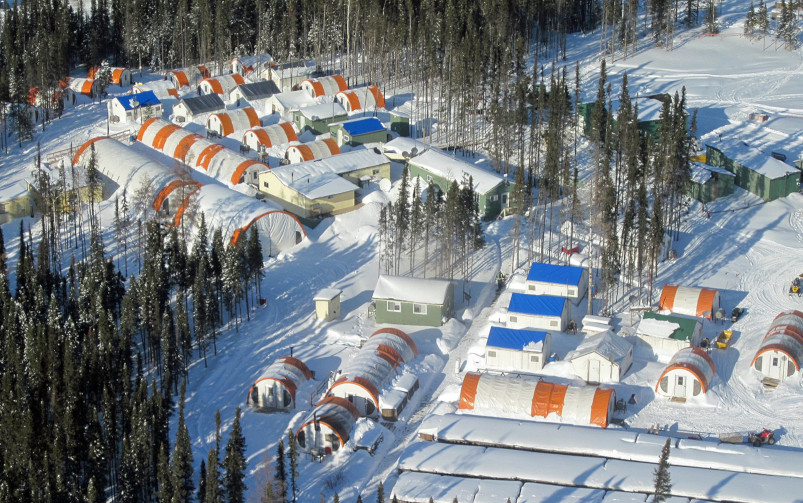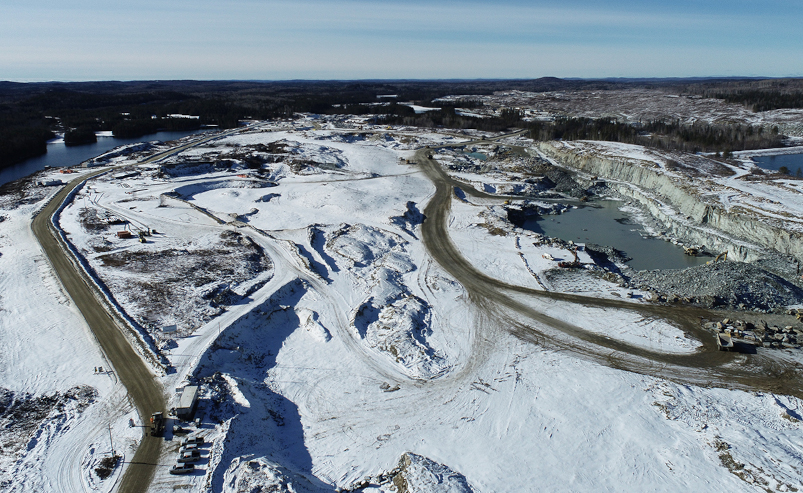Gold Bar has lowered its proven and probable reserve estimate following the transition of mining operations to a new deposit. Courtesy of McEwen Mining.
This article mistakenly referred to a "probable resource" and "tonnes of ore." We apologize for the errors.
McEwen Mining has released an updated feasibility study for its Gold Bar mine, located in central Nevada, that shows a drop in gold reserves and net present value compared to previous estimates.
In its 2018 Q4 results, prior to the beginning of commercial production at the mine, the company estimated its proven and probable mineral reserves at 430,000 recoverable gold ounces from 18.1 million tonnes grading at 0.82 grams per tonne. However, the new feasibility study now reports a new probable reserve estimate of 302,000 ounces of gold from 17.2 million tonnes at a grade of 0.84 grams per tonne is expected to be produced.
Through Dec. 2020, following successful mining at the Cabin Creek pits, the mine reached 58,600 gold ounces in total production. However, the company reported during its 2019 fourth quarter report of the likelihood of a discrepancy with its 2018 reserve estimates after transitioning its mining operations to the Gold Pick West pit from the Cabin Creek pit, which resulted in lower ore tonnes and gold grade returns because of “greater structural control of the mineralization than was previously expected.”
The combination resulted in a 16 per cent net reduction between the 2020 and 2018 probable reserve estimates. According to the company, this is due to changes that needed to be made to the geologic model and metallurgical recovery of the mine, as well as the inclusion of more drilling information and higher gold prices.
Related: Questions about the future of the Rio Tinto-owned mine have arisen after the Government of Mongolia expresses concerns over the mine’s ballooning costs and shrinking economic benefits
In order to complete the feasibility study, the miner committed to drilling an additional 11,500 feet at its Gold Pick, Gold Bar South and Gold Ridge deposit sites, performed further metallurgical testing and hired experts in the field of heap leach technology to review ore processing and provide recommendations.
The feasibility study, published on Feb. 22, also shows that the mine will have an estimated after-tax net present value of US$55.2 million with an eight per cent discount rate, assuming prices of US$1,500 per ounce of gold. This represents a difference from the mine’s 2018 previous net present value, which assessed the mine to be worth between US$62 and US$76 million at an eight per cent discount at the same gold price.
Additionally, the mine is estimated to have an all-in sustaining cost (AISC) of US$1,213 per ounce of gold moving forward, lower than its most recent third quarter 2020 AISC of US$1,585 per ounce. The mine is estimated to have a six-year mine life, with 2027 as its last year of production.




